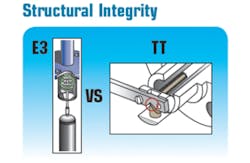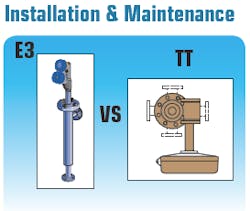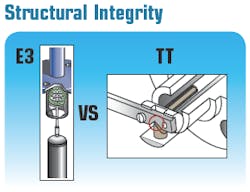Many instrumentation and control managers have adopted torque tube technology for use in liquid applications. However, professionals across many processing industries—including chemical, petroleum refining, power generation, pulp and paper, nuclear power, crude oil processing, and natural gas processing—have come to realize that range spring technology is a more reliable level measurement and control solution than torque tubes due to the output stability, structural integrity, and ease of use it provides.
The following comparison demonstrates the benefits that range spring technology may provide compared to torque tubes. This comparison uses a linear variable differential transformer (LVDT) transmitter with range spring technology, which is the operating principle commonly used by displacer level transmitters.
READ ALSO: FAQs On API RP 2350 Practices for Overfill Protection in Petroleum Facilities
- Torsion of the torque tube may result in fatigue failure of the enclosing tube, as well as the opportunity for accelerated corrosion due to the shear stresses induced in the tube. However, the static-pressure-retaining enclosing tube of a displacer level transmitter with range spring technology is not susceptible to either of these failure effects.
- Displacer transmitters, which feature a compact, vertical design, are also much easier to install than torque tubes; and make maintenance much easier because you can remove a displacer transmitter head without depressurizing the process or chamber. In contrast, removing a torque tube transmitter requires shutdown of the entire process and costly downtime.
- Displacer transmitter technology also gives you versatile access and ease of control, with remote mounting capability that can be up to 400 feet away from the instrument. This provides a significant advantage over torque tubes, which must be mounted within 30 feet of the sensor.
The following post was originally published on Magnetrol International's blog, which covers level and flow measurement solutions and application issues.
To download Magnetrol's Liquid Level Displacer Transmitter technology brochure, go here.




